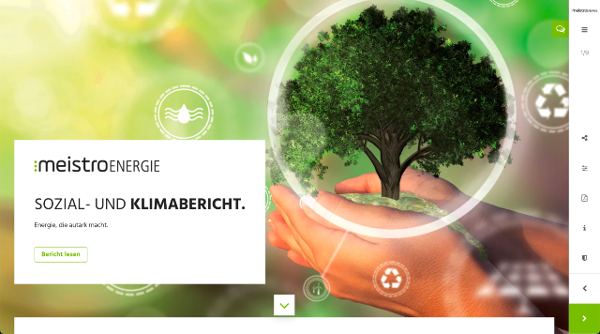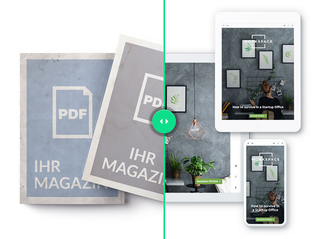
This article will show you what the so called paperless office is all about: Does the idea just sound good or is it actually useful? We'll show you which details you have to pay attention to - and why online magazines are far ahead of PDFs when it comes to sustainability.
Online vs. print: How much CO2 does an online magazine actually save?
However, one has to be careful by assuming that digital in general is more ecological than print. Therefor other aspects have to be considered. In a CO2 comparison online vs. print, online is not always ahead of the pack per se. The overall package has to be right and other aspects have to be considered.
Data researched by Greenpeace provide some insight into what is more ecological in the end. The overall environmental impact of digital reading is slightly lower than the impact caused by printed media. However, this relation can also be looked at from another point of view: Once a print medium has been printed, a copy can be read as often as required with zero additional emissions. Online, on the contrary, the environmental impact increases in line with the time people spend reading it.
Also numerous downloads are not really environmentally friendly. The more you read online, the more ecological it is eventually. If you only read one single magazine online, it would be pointless to buy a digital reading device. If, on the other hand, you read your magazines continuously on a device, the impact flips, as a hundred of printed magazines would cause an enormous consumption of resources.
The use of resources for production must also be taken into account as well as the source of electricity being used. Likewise, the printing materials used and the electronic waste generated matter in terms of sustainability. The general life cycle assessment therefore depends to a large extent on detailed questions.
Downloads in particular cause a huge consumption of electricity.
Best practice: digital sustainability reports – made with Webmag

Sparkasse UnnaKamen
Click here for the digital sustainability report of Sparkasse UnnaKamen (German).

meistro ENERGIE
Click here for the digital social and climate report of meistro ENERGIE GmbH (German).
Conclusion
The question "Should I switch to digital completely to relieve the environment and from now on just read online?" cannot be answered with a “yes” in general. Holistically, the life cycle assessment depends on many different factors. An important step towards more ecologically responsible actions: Refrain from communicating through PDFs online - not only for financial, annual, social and climate reports, but in general. Apart from the fact that PDFs are not well suited for online communication anyway, readers won’t be tempted to download and print your reports or content.
Switch to digital now
Webmag allows you to easily create, publish, communicate and evaluate your digital reports, such as financial, annual, social and climate report. Simply send us your PDF report and we will create a digital sample view for you. Free of charge.


Container for the dynamic page
(Will be hidden in the published article)